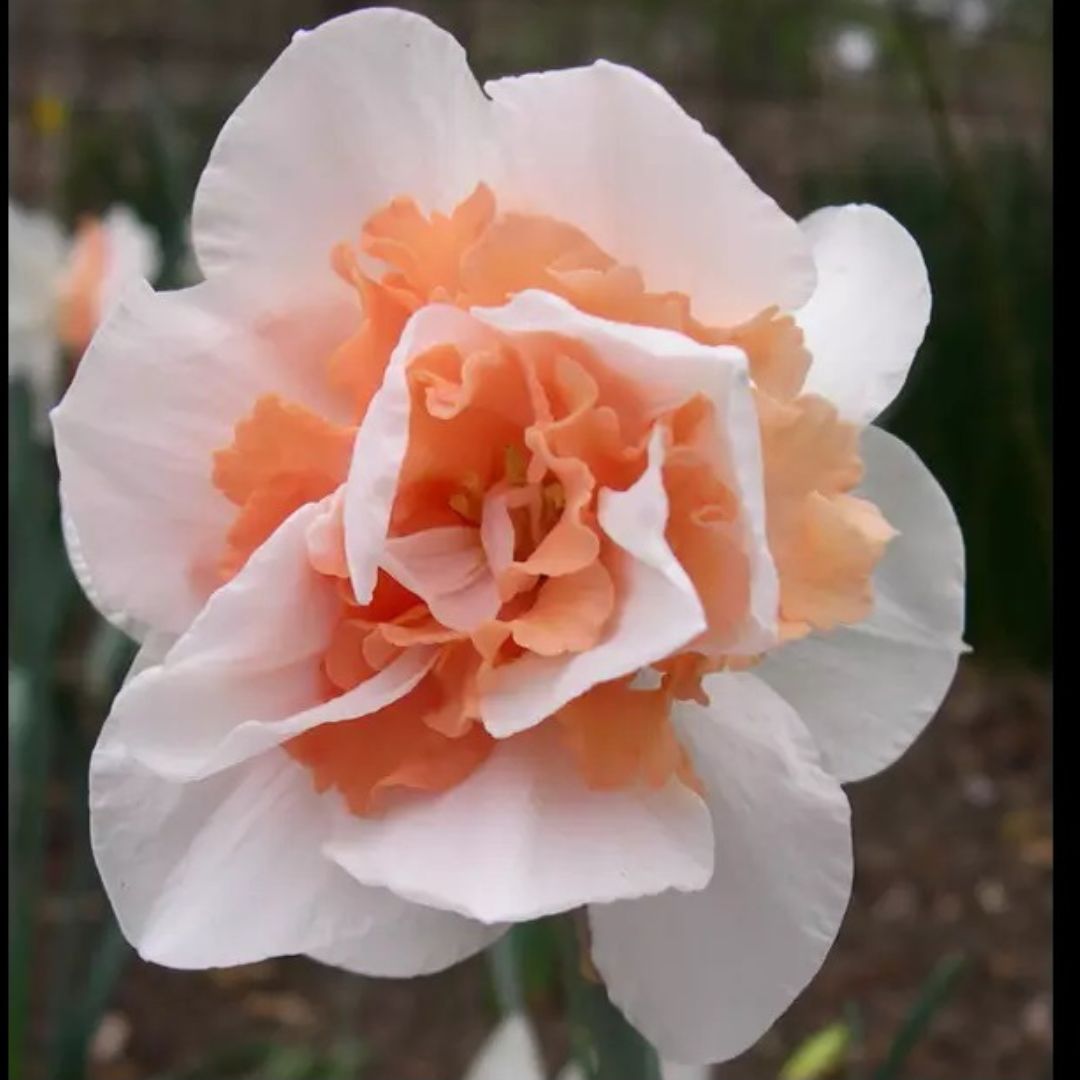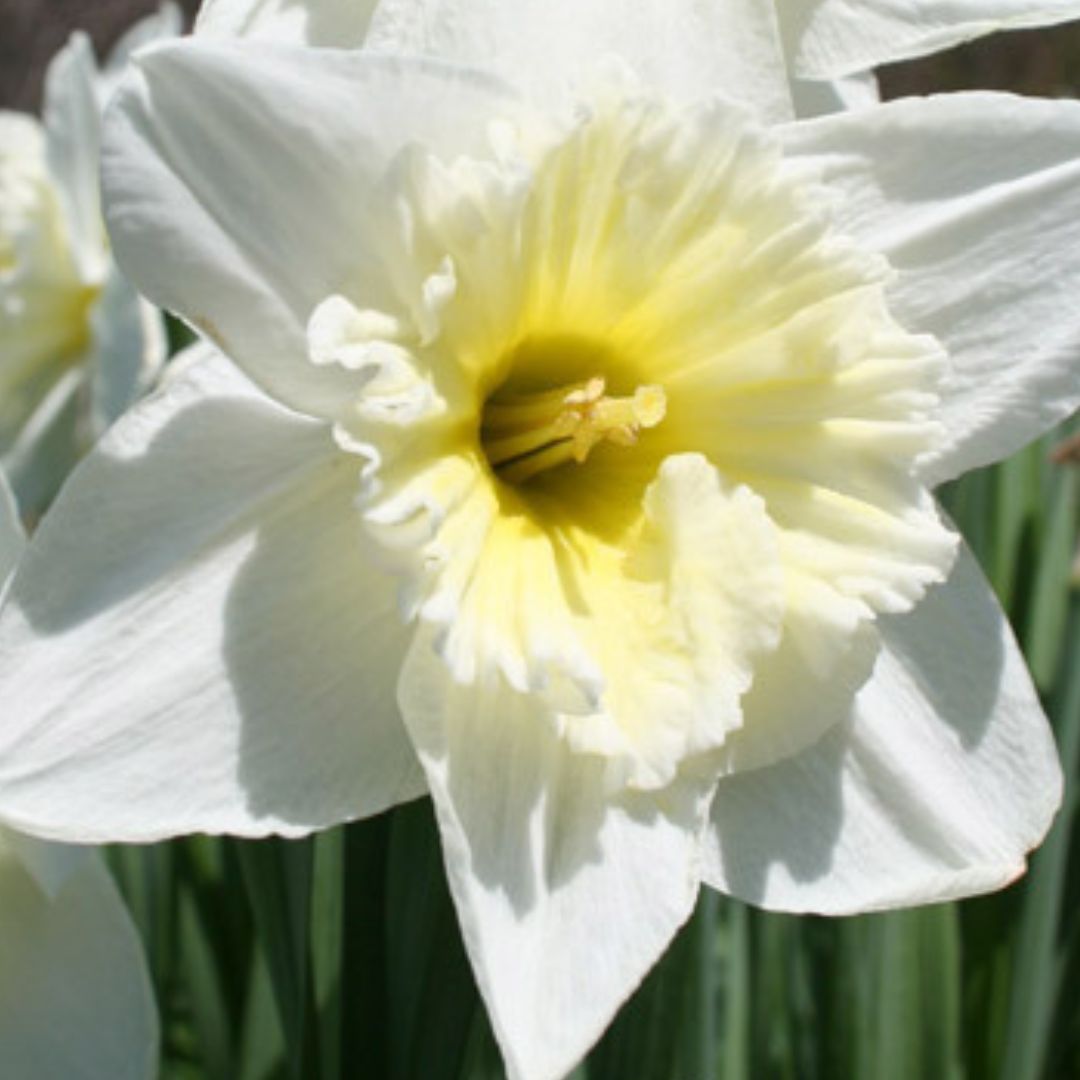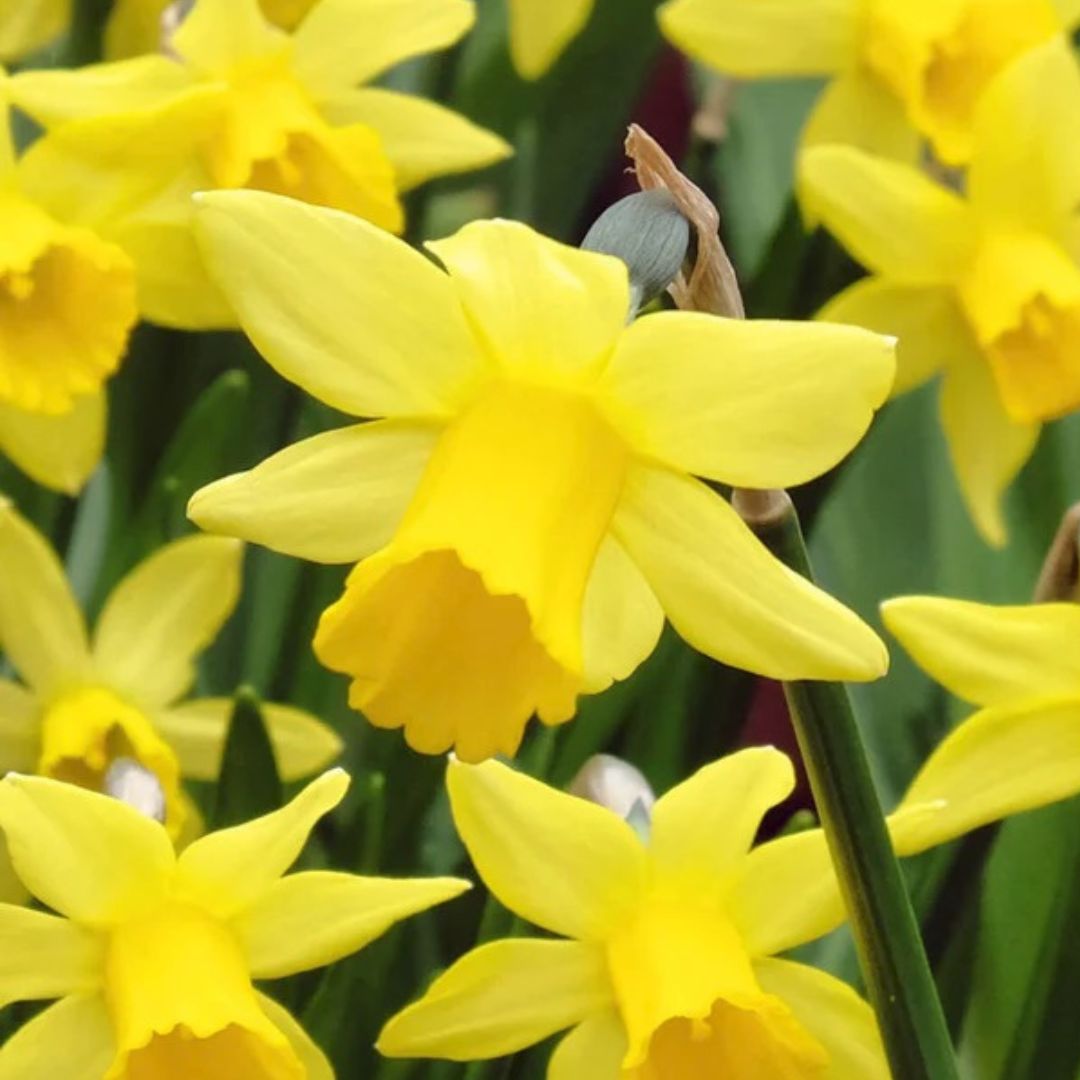































Symbolic for new beginnings and to ensure happiness, daffodils signal that spring is right around the corner. Daffodil belong to the Amaryllidaceae family and are native to Europe and North Africa, though they have widely grown and naturalized in many parts of the world.
Ice Follies: Narcissus 'Ice Follies' large cup daffodil are a favorite in our zone (7). The large flowers have ivory-white petals and wide, frilled cups that open lemon yellow and turn creamy white. A vigorous heavy bloomer, great for naturalizing, and lightly scented. An early/midseason bloomer.
Double Daffodil Replete:. Daffodil Replete has huge tangerine and cream blooms on 15" stems. Double narcissi have extra petals. The petals or the trumpet can be doubled and at times both fragrant and floriferous.
Jonquilla Hillstar: Sweetly fragrant, Jonquilla Narcissi yield one to five, and occasionally more, flowers per stem. The flowers have spreading or reflexed flower petals (perianth) and a cup-shaped, funnel-shaped or flared corona that is usually wider than it is long. Its foliage is rather slender.
Tazetta Geranium Daffodil: Small-cupped daffodil that makes a big impression when it blooms in mid to late spring. With up to six flowers per stem, each stem looks like a bouquet. Tazetta Daffodil Geranium features 2 ½" white flowers with orange cups reaching 14" tall at maturity.
Early Spring to Mid-Spring bloom. Best grown in Full Sun to Half Sun / Half Shade.
In fall, plant bulbs in deep, fertile, well-drained soil in full sun to light shade. Narcissi prefer well-draining soil, hate to get wet feet and love to be fed with a granular organic flower bulb fertilizer three times a year. Plant 6" apart and 6" deep in groups of 5,7,9 or more. Water during their growth period. After flowers bloom, let the foliage die back naturally. Once the foliage fades, cut it back.
Daffodils are the king of deer-resistant bulbs. They contain an alkaloid called lycorine that is distasteful and even poisonous to deer, rabbits and other mammals. Daffodils are poisonous to dogs if they eat the flowers or bulbs, or if they drink water from a vase with daffodils inside. The bulbs are often the most poisonous part of daffodils, as this is where the toxins are most concentrated.
Plant size and shape may differ from what is pictured.
For mail orders: Plants may go through shock during shipping. Upon arrival, take the plant out and water it thoroughly. If you are not satisfied with your purchase, please notify us via email at sales@amgardens.com and include a photo(s) within 24 hours of plant arrival.
For in store purchases: If you are not satisfied with your purchase, please call us at 423-870-5000 or return the plant in its original pot/condition within 3 days. Trees and shrubs have a 1 year warranty (exceptions may apply), but we highly encourage you to give us a call or email if you notice issues with your plant. We'd love to help you figure out what's wrong and save your plant!
Orders are shipped on Wednesdays and Thursdays; if your order is placed on a Wednesday, it may not ship until the following Wednesday. During peak season there may be delays in shipping. If it is too hot or cold, we suggest ordering during milder months to ensure plants arrive in best condition.